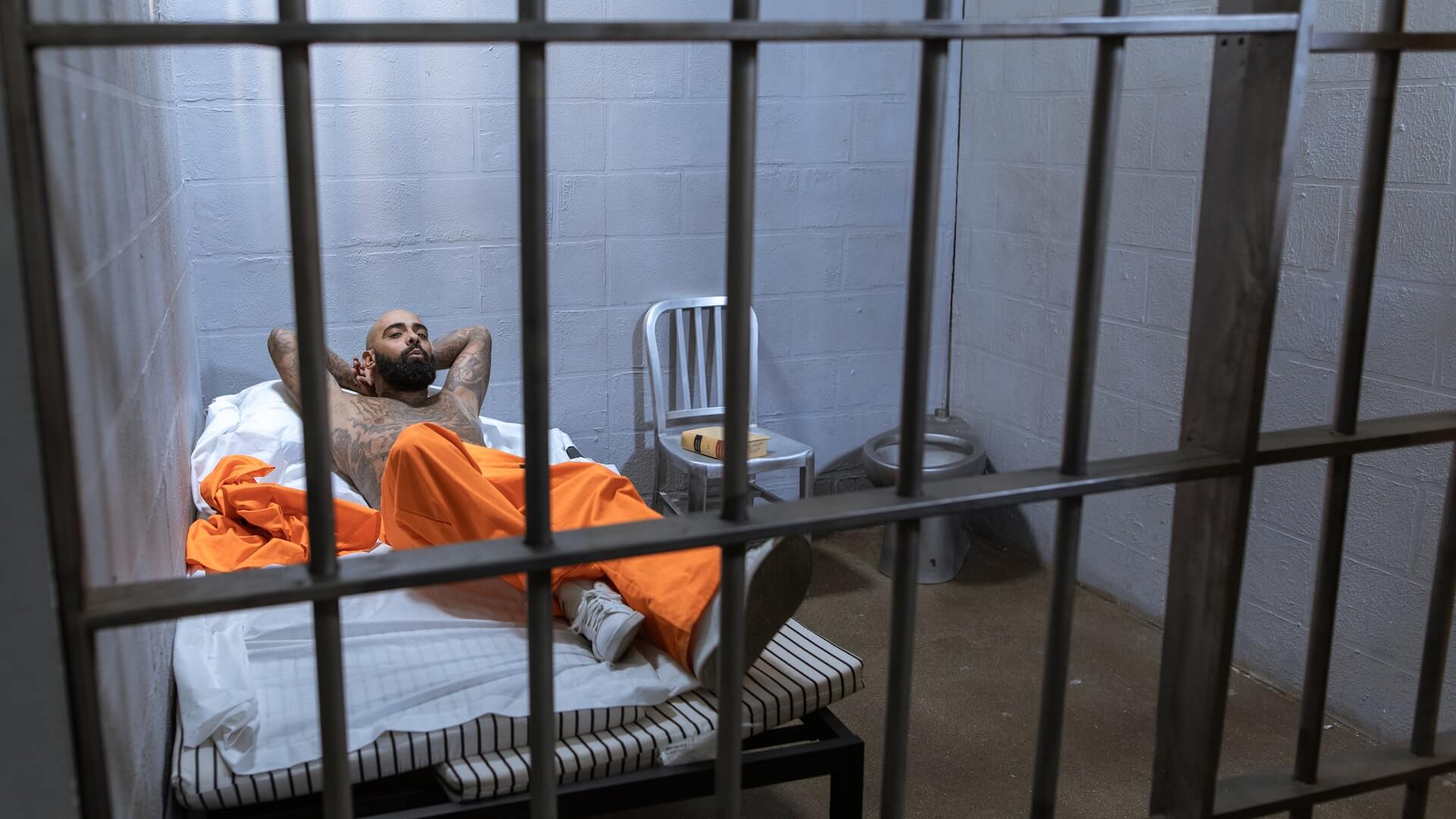Crime is a complex issue that affects every society in the world. Law enforcement agencies and criminologists have been studying the psychology behind crime for decades, trying to understand the motives and prevent it from happening in the first place. This is critical because, without a good understanding of the psychology behind crime, we cannot hope to prevent it. Crime can have a significant impact on individuals, families, and communities, and understanding the motives behind it is a key step in preventing it. In this blog post, we will delve into the psychology behind crime, the different motives behind different types of crimes, and how law enforcement agencies and individuals can work together to prevent it.
Introduction to the psychology of crime
The psychology of crime is a captivating and complex field that delves into the intricacies of human behavior and the motivations behind criminal acts. It seeks to understand why individuals engage in illegal activities, explore the underlying factors that contribute to criminal behavior, and ultimately find ways to prevent and reduce crime.

At its core, the psychology of crime recognizes that criminals are not simply born that way. Rather, it affirms that various psychological, social, and environmental factors can influence an individual’s propensity towards criminal behavior. By unraveling these underlying motives, researchers and experts aim to shed light on the intricate web of human cognition, emotion, and decision-making.
One key aspect of understanding the psychology of crime is comprehending the diverse range of motives that drive individuals to engage in unlawful acts. While some criminals may be driven by financial gain, others may be motivated by a desire for power, revenge, or even a distorted sense of morality. By studying these motives, psychologists and criminologists gain invaluable insights into the mindset of criminals, enabling law enforcement agencies and policymakers to develop more effective crime prevention strategies.
Moreover, the psychology of crime recognizes that crime does not exist in isolation. It acknowledges the impact of social and environmental influences, such as poverty, peer pressure, and family dynamics, on an individual’s likelihood of engaging in criminal behavior. These external factors can significantly shape an individual’s cognitive processes, attitudes, and beliefs, ultimately contributing to the decision to commit a crime.
By understanding the psychology of crime, we can unlock a deeper comprehension of the complex interplay between human behavior and criminal acts. This knowledge empowers us to develop evidence-based prevention strategies, implement targeted interventions, and foster a safer society for all.
Understanding the motives behind criminal behavior
Each criminal act is driven by a unique set of circumstances, experiences, and psychological factors that shape the individual’s behavior.
One significant motive behind criminal behavior is the desire for financial gain. Many crimes, such as theft, fraud, and burglary, are driven by the need to obtain money or valuable possessions. Financial motives can arise from various factors, including poverty, addiction, or even a desire for a lavish lifestyle.
Another common motive is power and control. Some individuals engage in criminal acts to exert dominance over others or to satisfy their need for authority. This motive can manifest in various forms of crime, such as domestic violence, sexual assault, or even acts of terrorism.
Additionally, psychological motives such as revenge, jealousy, or resentment can play a pivotal role in criminal behavior. These motives often stem from deep-seated emotional issues, unresolved conflicts, or a distorted sense of justice. Crimes driven by these motives can include acts of violence, stalking, or even premeditated murder.
Understanding these underlying motives is essential for effective crime prevention strategies. By addressing the root causes and providing support and resources to individuals at risk, society can work towards reducing the occurrence of criminal behavior. This can be achieved through programs such as education, therapy, socio-economic assistance, and community outreach initiatives.
Furthermore, understanding the motives behind criminal behavior can help law enforcement agencies and criminal justice systems develop targeted approaches to investigation, prosecution, and rehabilitation. By tailoring interventions based on the specific motives driving criminal behavior, authorities can work towards reducing recidivism rates and promoting rehabilitation.
Psychological theories of crime
Psychological theories of crime offer valuable insights into the complex dynamics behind criminal behavior. By delving into the depths of human psyche, researchers and criminologists have identified various theories that attempt to explain why people engage in criminal activities. These theories go beyond the surface-level understanding of crime and delve into the underlying motives and factors that drive individuals to commit unlawful acts.

One prominent theory is the psychodynamic theory, which emphasizes the role of unconscious desires and unresolved conflicts in shaping criminal behavior. According to this theory, individuals may engage in criminal activities as a means to fulfill their hidden desires or to alleviate internal conflicts. For example, a person with unresolved anger and frustration may resort to acts of violence as a way to release pent-up emotions.
Another influential theory is the social learning theory, which suggests that criminal behavior is learned through observation and interaction with others. This theory emphasizes the importance of social environments and the influence of peers, family, and community in shaping an individual’s behavior. Individuals may learn criminal techniques, attitudes, and values from their social circles, leading them to engage in unlawful activities.
Additionally, the rational choice theory posits that individuals weigh the potential benefits and risks before engaging in criminal behavior. This theory suggests that people are rational actors who make calculated decisions based on their perceptions of the potential rewards and punishments associated with criminal acts. Factors such as the perceived benefits, the severity of punishment, and the likelihood of getting caught all play a role in an individual’s decision to commit a crime.
Understanding these psychological theories of crime is crucial for developing effective prevention strategies. By addressing the underlying motives and influences that drive criminal behavior, interventions can be designed to disrupt the pathways to crime and promote positive alternatives. This may involve providing individuals with healthier coping mechanisms, addressing root causes of anger and frustration, fostering positive social environments, and promoting education and awareness about the consequences of criminal actions.
The role of upbringing and environment in criminal behavior
Research has consistently highlighted the importance of a supportive and nurturing upbringing in reducing the risk of criminal behavior. Children who grow up in stable and loving households, surrounded by positive role models, are more likely to develop a strong moral compass and a sense of empathy towards others. On the other hand, individuals who have experienced neglect, abuse, or witnessed violence during their formative years are more vulnerable to adopting deviant behavior patterns.
Furthermore, the neighborhood and community in which a person resides also play a crucial role in shaping their behavior. High-crime areas with limited access to education, healthcare, and employment opportunities can create a cycle of poverty and desperation, leading individuals to resort to criminal activities as a means of survival or as a result of peer pressure.
It is important to note, however, that not all individuals who come from disadvantaged backgrounds or troubled neighborhoods become involved in criminal behavior. The interplay of various factors, including individual resilience, access to support systems, and personal choices, also contribute to whether someone veers towards or away from a life of crime.
Understanding the impact of upbringing and environment on criminal behavior is essential for developing effective prevention strategies. Investing in early intervention programs, such as quality education, mentorship initiatives, and community support services, can provide at-risk individuals with the necessary tools and opportunities to break free from the cycle of crime.
The influence of mental health on criminal behavior
The influence of mental health on criminal behavior is a complex and fascinating topic that warrants careful examination. While it is important to note that the majority of individuals with mental health conditions are not criminals, there is a correlation between certain mental illnesses and an increased risk of criminal behavior.
Various mental health conditions can contribute to criminal behavior in different ways. For instance, individuals with severe personality disorders, such as antisocial personality disorder or borderline personality disorder, may exhibit impulsive and reckless behaviors that can lead to criminal acts. Similarly, those who suffer from psychotic disorders, like schizophrenia, may experience delusions or hallucinations that distort their perception of reality, potentially leading to violent or unlawful actions.
It is crucial to understand that mental health alone does not determine criminal behavior. Other factors, such as socioeconomic status, substance abuse, and a lack of social support, can also contribute to criminal tendencies in individuals with mental health conditions. It is the interplay of these factors that ultimately influences an individual’s behavior.
Prevention plays a significant role in addressing the relationship between mental health and criminal behavior. By providing accessible and quality mental health care, early intervention, and support services, we can help individuals manage their mental health conditions effectively and reduce the risk of criminal involvement. Additionally, promoting awareness and reducing stigma surrounding mental health can encourage individuals to seek help before their conditions escalate to the point of criminality.
Furthermore, collaboration between mental health professionals and the criminal justice system is essential. By identifying individuals who may be at risk due to their mental health conditions and implementing appropriate interventions, such as diversion programs or specialized treatment within correctional facilities, we can work towards breaking the cycle of criminal behavior and promoting rehabilitation.
How societal factors contribute to crime rates
Crime rates are not solely influenced by individual factors, but also by various societal factors. These factors can have a profound impact on the motivations behind criminal behavior and the prevalence of crime within a community.

One significant societal factor that contributes to crime rates is socioeconomic inequality. When there is a stark divide between the rich and the poor, it can create an environment of frustration, desperation, and limited opportunities for those on the lower end of the economic spectrum. This can lead individuals to resort to criminal activities as a means of survival or to obtain the things they desire but cannot afford.
Additionally, the lack of access to quality education and employment opportunities can further exacerbate the issue. When individuals are unable to acquire the necessary skills or find stable employment, they may turn to criminal activities out of a sense of hopelessness and frustration.
Moreover, the breakdown of social institutions and community support systems can also contribute to higher crime rates. When there is a lack of cohesive communities and strong social bonds, individuals may feel disconnected and marginalized. This can lead to a higher susceptibility to engage in criminal behavior as they may not feel a sense of belonging or have alternative outlets for their frustrations.
Furthermore, the influence of media and popular culture cannot be ignored. Constant exposure to violence, crime, and deviant behavior through various forms of media can desensitize individuals and normalize criminal actions. This can result in a distorted perception of acceptable behavior, making crime appear more attractive or justifiable to some.
Understanding these societal factors is crucial in the prevention of crime. By addressing socioeconomic inequality, providing equal opportunities for education and employment, and fostering strong community relationships, we can work towards creating an environment that is less conducive to criminal behavior. Additionally, promoting media literacy and responsible media portrayals can help mitigate the negative influence of popular culture on individuals’ behavior.
Preventing crime through early intervention and rehabilitation
Preventing crime is not just about catching criminals after the fact; it’s also about addressing the root causes and providing opportunities for rehabilitation. Early intervention plays a crucial role in identifying individuals who may be at risk of engaging in criminal behavior and providing them with the necessary support and guidance to make positive choices.
One effective approach is to focus on youth outreach programs and community initiatives. By targeting at-risk individuals during their formative years, we can provide them with the tools they need to overcome challenging circumstances and avoid a life of crime. These programs may include mentorship, counseling, vocational training, and educational support.
Additionally, rehabilitation programs for incarcerated individuals are essential in breaking the cycle of crime. It is crucial to address the underlying issues that led to criminal behavior, such as substance abuse, mental health disorders, or lack of education and employment opportunities. By providing access to rehabilitation services, such as counseling, skills training, and job placement assistance, we can help reintegrate individuals back into society as law-abiding citizens.
Furthermore, preventing crime requires a collaborative effort between law enforcement, educators, social workers, and community members. By working together, we can create a supportive environment that fosters positive behavior and discourages criminal activities. This can involve implementing community policing strategies, improving access to social services, and promoting awareness campaigns to educate the public about the consequences of crime.
The importance of addressing underlying psychological issues
While it is easy to view criminals as solely responsible for their actions, there is often a complex web of factors at play. By recognizing and addressing these psychological issues, we can take significant steps towards preventing crime and creating a safer society.

One important aspect to consider is the impact of childhood experiences on later criminal behavior. Research consistently shows that individuals who have experienced neglect, abuse, or trauma during their formative years are more likely to engage in criminal activities. These experiences can lead to the development of psychological issues such as low self-esteem, anger management problems, or a lack of impulse control, which can contribute to criminal behavior later in life.
Furthermore, mental health disorders play a significant role in criminal behavior. Many offenders suffer from conditions such as antisocial personality disorder, substance abuse disorders, or mood disorders. These disorders can distort their perception of reality, impair their decision-making abilities, and contribute to impulsive and reckless behavior.
Addressing these underlying psychological issues is crucial for effective crime prevention. It involves not only punishing offenders but also providing them with the necessary support and interventions to address their psychological challenges. This can include therapy, counseling, and rehabilitation programs that aim to address the root causes of their criminal behavior.
Additionally, early intervention and prevention strategies are essential. By identifying individuals at risk of developing criminal behavior early on, we can provide targeted interventions and support to address underlying psychological issues before they escalate. This can involve community outreach programs, educational initiatives, and access to mental health services to help individuals develop healthier coping mechanisms and make positive life choices.
Promoting community empowerment and social support
Crime often thrives in communities where individuals feel isolated, marginalized, and lack the necessary resources and support systems. By fostering a strong sense of community empowerment, we can create an environment where individuals feel valued, connected, and supported, thereby reducing the likelihood of criminal activities.
One effective way to promote community empowerment is by encouraging active participation and engagement among community members. This can be achieved through organizing neighborhood watch programs, community clean-up initiatives, or even hosting regular community meetings. These activities not only bring people together but also instill a sense of collective responsibility and ownership over the community’s well-being.
Social support networks play a significant role in crime prevention as well. Strong social connections and support systems provide individuals with the tools and resources to cope with the challenges they may face, reducing the likelihood of engaging in criminal behavior. Encouraging the development of support networks, such as mentoring programs, support groups, or community centers, can make a significant impact in fostering a sense of belonging and reducing the risk factors associated with criminal activities.
Additionally, promoting social and economic opportunities within the community is essential for preventing crime. By providing access to education, job training, and employment opportunities, individuals are less likely to resort to criminal activities as a means of survival. Creating an environment that supports economic growth and provides equal opportunities for all helps to address the underlying factors that contribute to criminal behavior.
Conclusion
By understanding the motives and psychological factors that drive criminal behavior, we can take proactive steps towards prevention. It is essential to recognize that crime is a complex issue influenced by various social, economic, and psychological factors. By shedding light on these aspects, we can work towards creating safer communities and implementing effective crime prevention strategies. Remember, knowledge is power, and together, we can make a difference in fighting against crime.



